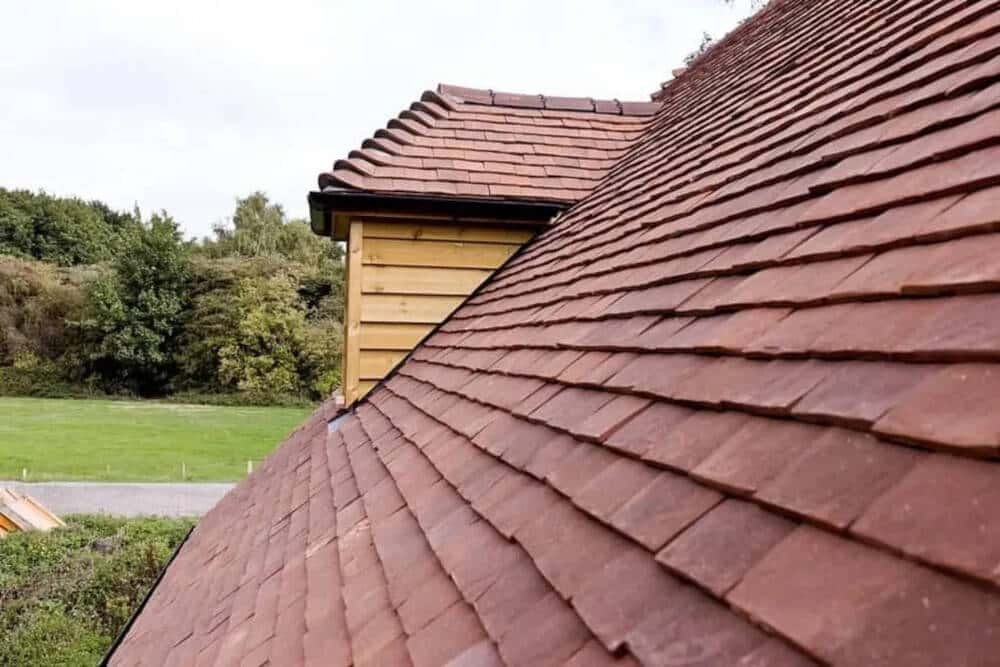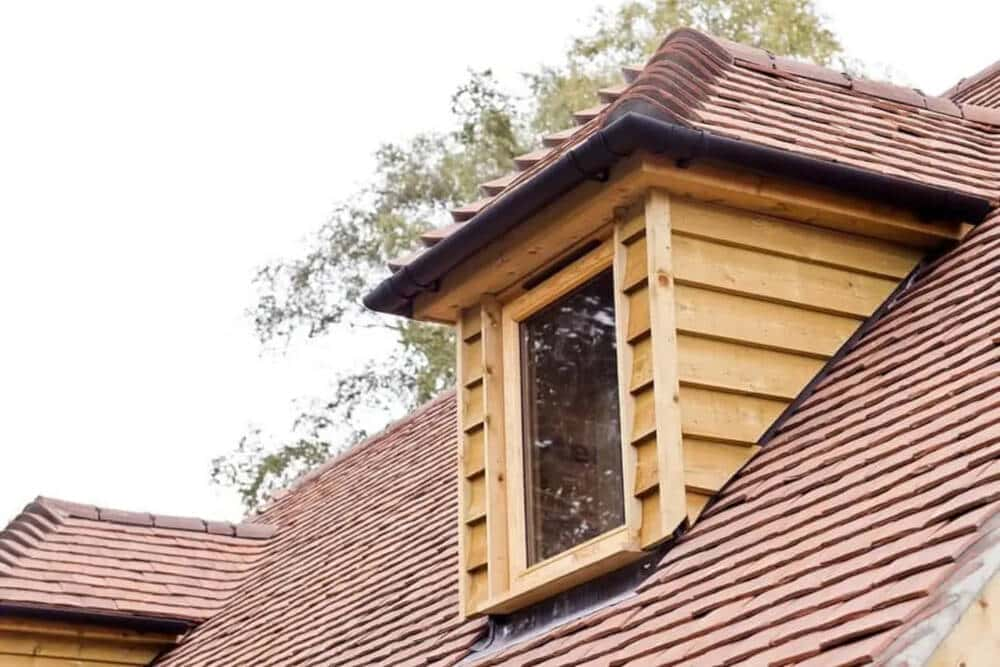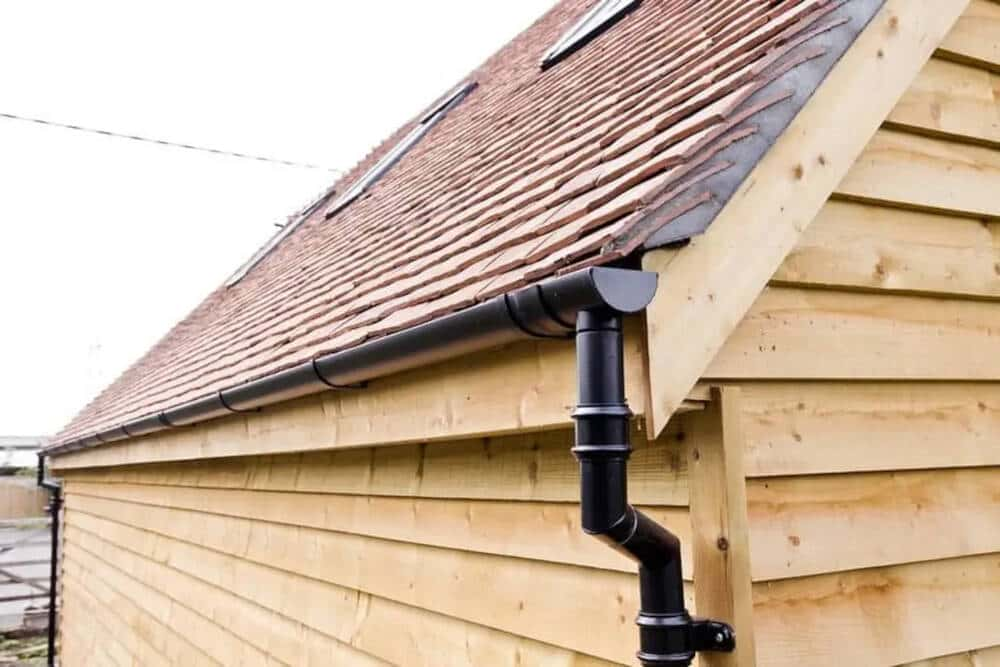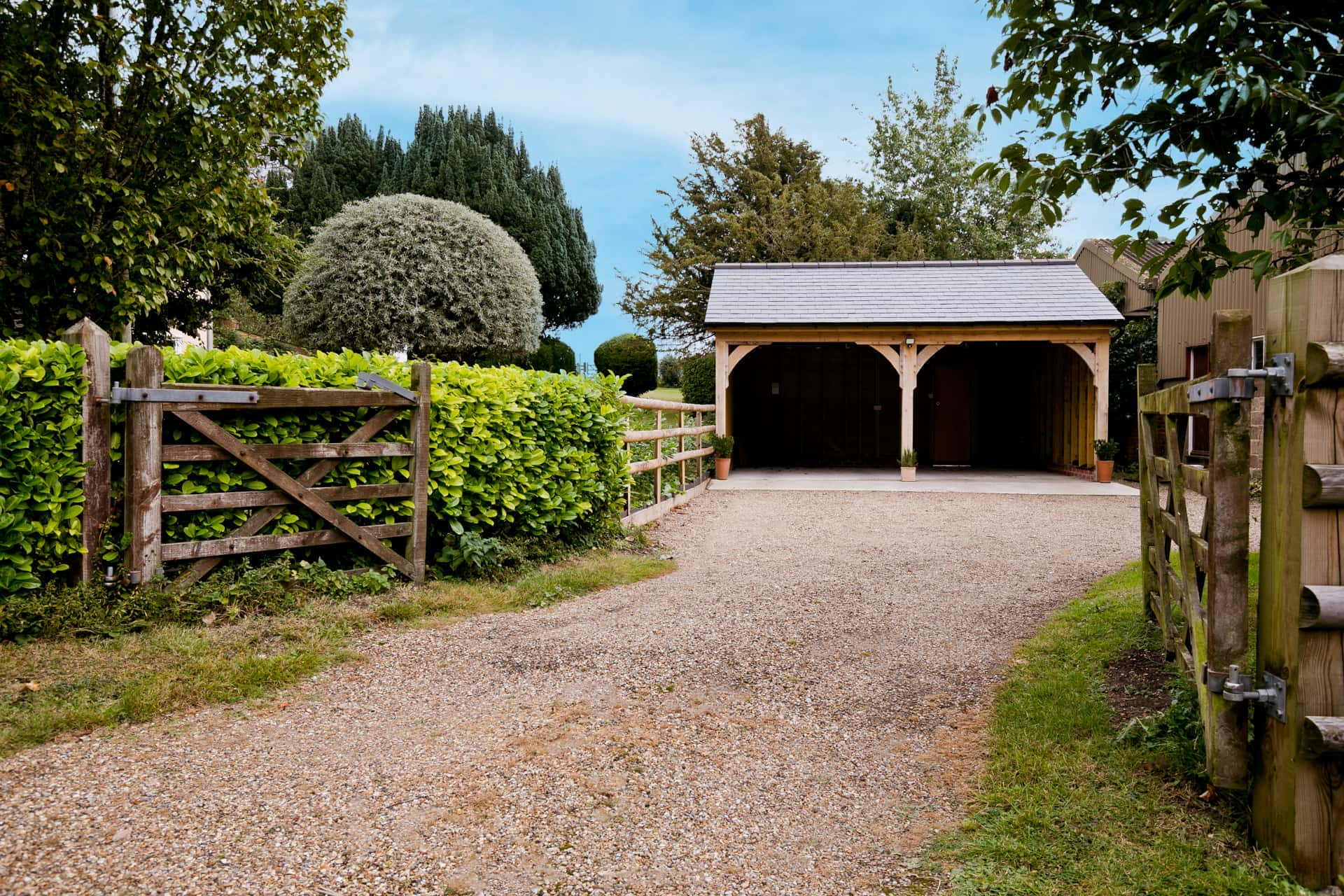Which stable roofing material is best for stables?
Choosing the right material for a stable roof is crucial for protection against weather elements, preventing water damage and ensuring the integrity of the building’s structure as well as the safety of the stable occupants. Plus, the right material enhances energy efficiency by reducing cooling and heating needs. Durability is key too, as it minimises the frequency of repairs and replacements, offering long-term savings.
Aesthetically, the roof significantly influences a structure’s appearance and it’s often important to owners that it blends well with its surroundings, not just so it complements other buildings near to it, but also to ensure it adds value for the property owner.
Choice of stable roofing materials
There are several types of materials that are an excellent choice for a stable roof and other timber structures. Roofing is categorised into two types: lightweight and heavyweight. These are our most requested roof materials:
Lightweight roofing materials
Popular lightweight materials for stable roofs and other agricultural buildings include:
- Onduline
- Felt shingles
- Steel
- Onduvillia (this is the same as Onduline but has a tiled effect)
Heavyweight roofing materials
A heavyweight roof refers to a tiled roof. Popular heavyweight materials include:
- Slate
- Clay
At National Timber Buildings, we use Onduline roofing as standard unless customers specify otherwise. As a bespoke timber building company, we can cater to most specified roof materials.
Our stable roofing materials can be used on a variety of land . These include wooden stables for horses, tack rooms, food stores, field shelters, carports, workshops and many more. Allowing you to achieve a consistent style throughout the various buildings that may make up your horse yard. Besides being easy to install, they also require minimal maintenance whilst providing superb durability. This minimises any disruption and provides your horses with a settled living environment.
Let’s take closer look at some of our popular roof materials:
Onduline
As we have already mentioned, Onduline is the roof material we use as standard at National Timber Buildings. We often have people tell us they have heard that Onduline sags between the rafters. This can happen if:
– the rafters are too far apart
– there is no roof lining fitted underneath.
However, our rafters are spaced no more than 600mm apart and we fit a 9mm OSB roof lining* to eliminate sagging.
Onduline roofing offers several benefits:
- Waterproofing: Onduline roofing is made from organic fibres impregnated with bitumen and resin which means it is great for creating perfectly waterproof roofing systems. It is highly effective in preventing water leaks and protecting the structure from water damage. Furthermore, as it is made from recyclable and environmentally friendly materials, you’ll be making a sustainable choice too.
- Lightweight: It is lightweight compared to traditional roofing materials like tiles or metal, making it easier to manage and install.
- Durable: Onduline roofing is durable and can withstand harsh weather conditions, including heavy rain, hail, and fierce winds. It is also resistant to corrosion and rust.
- Insulation: It provides good thermal and sound insulation, creating a more comfortable environment inside the building and will contribute to energy efficiency.
- Easy installation: It is easy and quick to install, saving time and simplifying your timber structure project.
- Modest maintenance: Once installed, Onduline roofing requires minimal maintenance, saving owners time and money in the long run.
- Longevity: When properly installed and maintained, Onduline roofing can have a long lifespan, providing reliable protection for many years.
What about Onduvilla?
Onduvilla is a material that is from the same family as Onduline. It offers all the same benefits but has a tiled effect for a different aesthetic.
Examples of some of our Onduline/Onduvilla roofing projects:
Stable with green Onduline roofing:
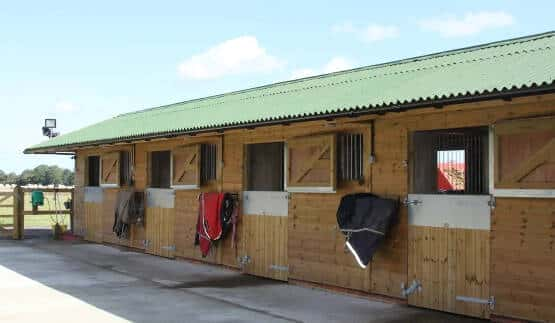
Stable with black Onduline roof:
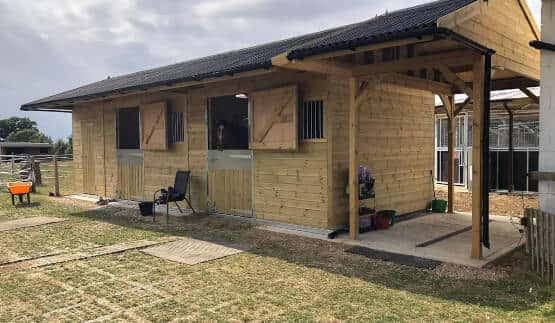
Carriage barn with black Onduline roofing:
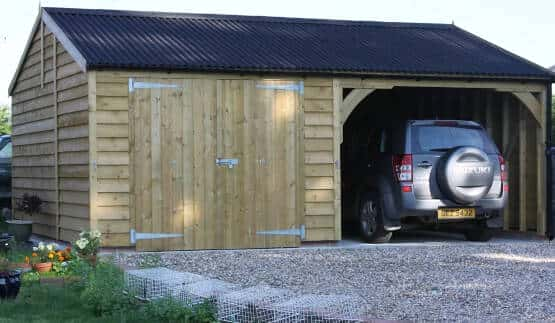
Four-bay carriage barn with shaded Onduvilla roof:
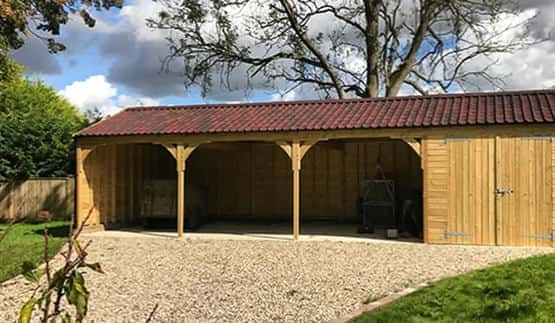
12’ x 24’ workshop with shaded red Onduvilla roof:
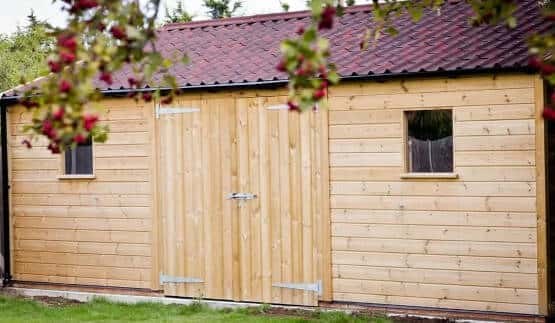
Clay
A clay tiled roof offers several benefits:
- Durability: Clay tiles are incredibly durable and can last for several decades. They are resistant to rot, insect damage, and fire, providing long-term protection for the structure.
- Aesthetic appeal: Clay tiles have a timeless, elegant appearance that enhances the aesthetics of any building. They are available in a variety of styles, colours, and finishes, allowing for customisation to match different architectural designs. Due to their aesthetic appeal and sturdiness, structures with clay tile roofs often add value. Plus, clay tiles retain their colour and appearance over time, resisting fading from UV rays. This maintains the roof’s visual appeal for many years.
- Limited maintenance: Clay tile roofs require minimal maintenance. They do not rot or decay, and individual damaged tiles can be easily replaced without affecting the rest of the roof.
- Energy efficiency: Their natural insulating abilities help regulate indoor temperatures. They help to keep the interior of the structure warm in winter and reflect the sun’s heat in summer, reducing the need for excessive and expensive heating and air conditioning.
- Environmentally friendly: Clay tiles are made from natural materials and can be recycled. They do not deplete natural resources, making them an environmentally-friendly roofing option.
- Weather resistance: Clay tiles are resistant to extreme weather conditions, including heavy rain, hail, and high winds. They do not rust or corrode, ensuring their longevity even in harsh climates.
Examples of some of our clay timber buildings:
This gorgeous bespoke building chose clay tiles which complement it perfectly whilst ensuring its secure and protected from all weather conditions:
Purpose-built garage with catslide roof and clay tiles:
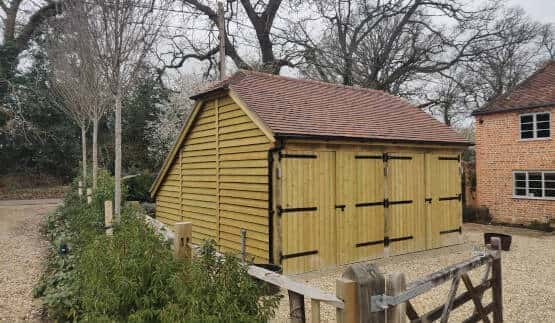
Five-bay carriage barn with attic space in the clay-tiled roof
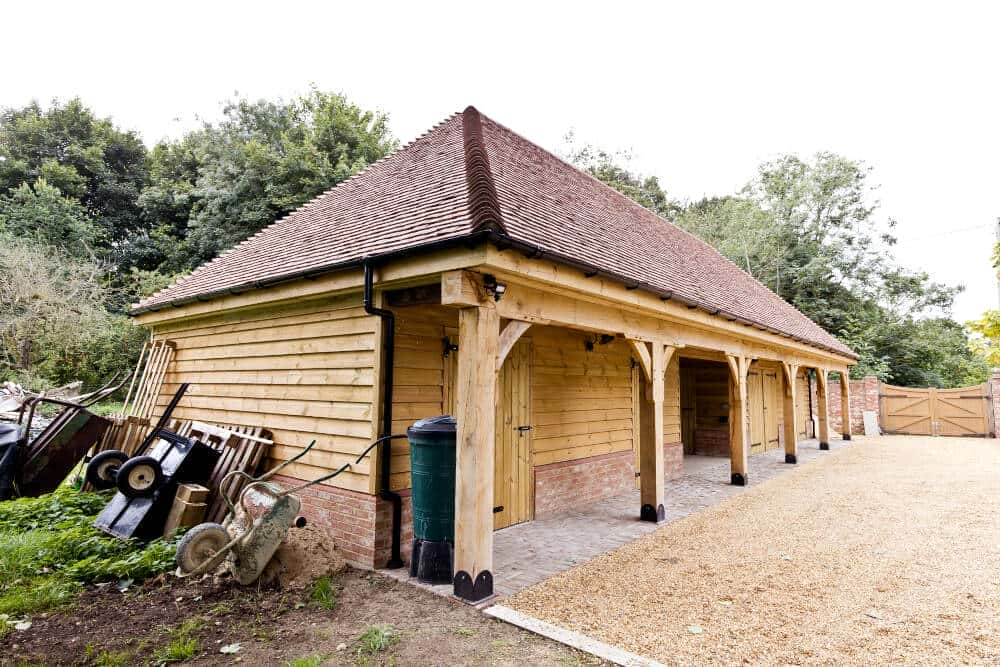
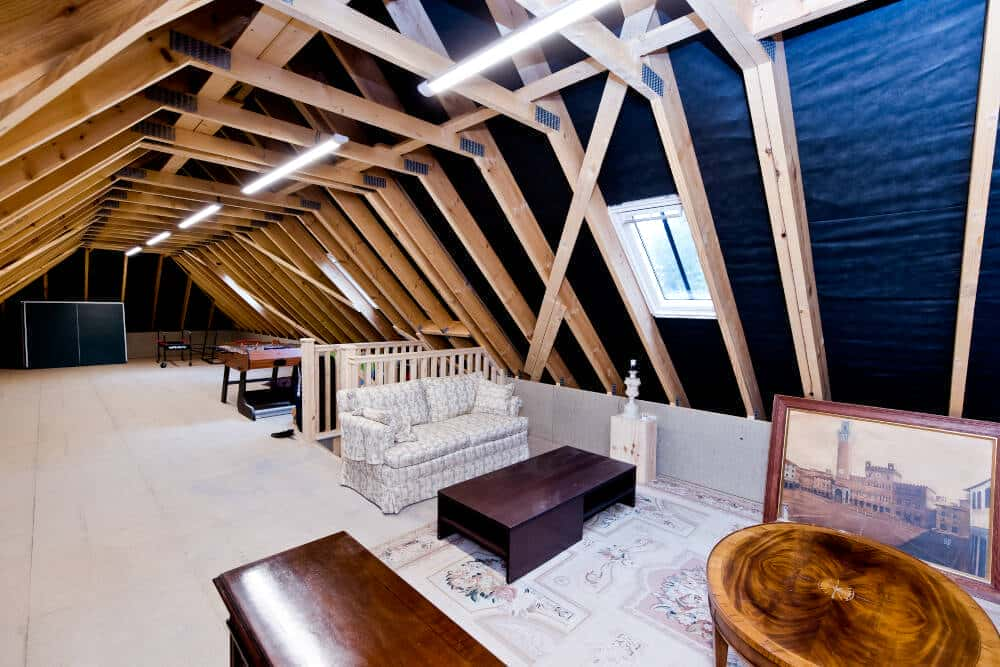
Slate
Another great heavyweight roofing material for agricultural buildings are slate tiles:
- Durability: Slate tiles are durable and can withstand the rigours of agricultural environments. They are resistant to damage from heavy rain, hail, and extreme weather conditions, ensuring long-lasting protection for stable structures for decades.
- Natural insulation: This is another natural insulating material which is super beneficial for agricultural buildings where maintaining a consistent temperature is essential for the well-being of livestock or stored produce.
- Fire resistance: Slate tiles are non-combustible and, therefore, fire resistant. In agricultural settings where the risk of fire can be higher due to equipment or storage of combustible materials, a fire-resistant roofing material is crucial for safety.
- Minimal maintenance: An advantageous trait for agricultural buildings where regular upkeep may not be a top priority. They do not rot, warp, or corrode, reducing the need for frequent repairs or replacements.
- Natural aesthetics: Slate roofs have a distinctive and attractive appearance that can enhance the overall aesthetic of the stable. This can be important for those who want to create a visually appealing and professional-looking facility.
- Environmentally friendly: Slate is a natural material that is sourced from quarries. While the extraction process needs to be managed responsibly, slate is considered a more environmentally friendly option compared to some synthetic roofing materials.
- Pest resistance: Slate tiles are resistant to pests such as insects and rodents, which can be a concern in stable and other agricultural settings.
Examples of some of our slate timber buildings:
Two-bay carriage barn with natural slate roofing:
Felt shingles
When it comes to a timber structure, here’s some benefits of felt shingle roofing:
- Affordability: Felt shingles are often more affordable than clay tiles, slate, or Onduline roofing, making them a budget-friendly option for timber structures.
- Lightweight: Felt shingles are lightweight, which puts less stress on the timber structure. This can be an advantage for older or less robust timber buildings.
- Ease of installation: Felt shingles are relatively easy to install, making them a great choice for the quick installation of DIY timber building kits.
- Versatility: Felt shingles come in assorted colours and styles, allowing for customisation and versatility in design choices.
- Aesthetics: Felt shingles help create a modern edge on a timber structure.
Examples of some our felt shingle roofs:
12’ x 24’ mobile field shelter with felt shingle roofing:
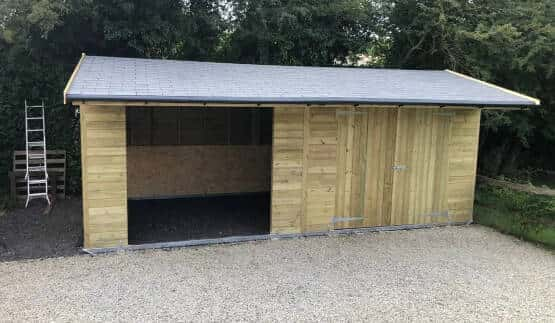
Garage with felt shingle tiles:
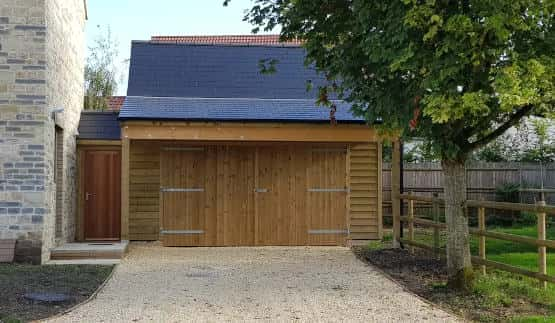
Carriage barn with felt shingle roof:
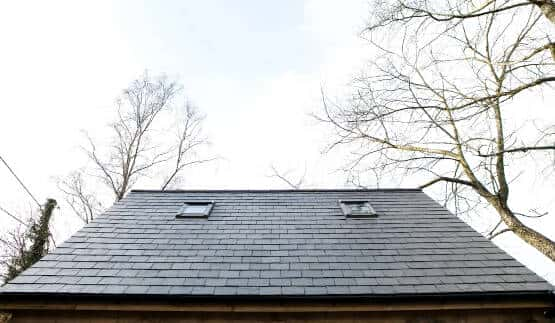
It’s important to note that while each roof material offers many benefits, the effectiveness and longevity of any roofing system also depend on proper installation and regular maintenance.
Factors that may affect your choice of stable roof material
When selecting a roof material for a stable or other agricultural building, you’ll need to consider the impact roof choice may have on the horses or other livestock. For example, a steel roof can be too noisy for stables and may distress horses, particularly when they are stabled for longer periods (which is often the case in winter or if they are poorly). Other factors to consider include:
Climate
The local climate is vital. Areas with heavy rainfall might require materials that are highly waterproof such as Onduline, while regions with intense sunlight may benefit from materials that provide good UV protection. If you are a very windy location, felt tiles will struggle as they tend to blow up in intense winds; a heavyweight alternative would be much more effective.
Durability
You’ll want your stable to last for many years, so a good durable material will be a better choice to withstand the elements over time. It will reduce the frequency of repairs and replacements.
Blending in with the surroundings
Ensuring a building is aesthetically pleasing is always necessary. It is also important that a new structure blends in with other buildings on the land as well as its natural surroundings. For example, if you have clay times on your house, you’ll want clay tiles on your new stable to complement it. Alternatively, if you want a lightweight roof for your stable but you have clay tiles on your house, you might want to consider opting for a felt shingle or Onduvilla roof. You will need to combine practicality with aesthetic preference, but with so many roof options to choose from you will find a compromise with which you are happy.
Weight
The weight of the roofing material will have impact, especially if the building has specific weight limitations. For example, if you choose a heavy-duty tile like slate or clay, then the roof structure would need to be upgraded to a 4×2 frame rather than a 3×2 frame to take the extra weight.
Most people will have already sought planning permission for their stable before they approach a timber building supplier like us. In this case, it is a condition of planning that we quote for the roof type and design that they have gained planning approval for; we cannot change the roof without submitting a new planning request. In some cases, the planning drawings could be open ended. For example, the drawings may state that corrugated roofing should be used, which means that concrete, steel or Onduline could all be used.
Compliance with regulations is essential, ensuring the chosen material aligns with local building codes to avoid legal issues.
Insulation
Roofing materials vary in their insulating properties. Consider how well the material can regulate temperature inside the stable, especially if it houses livestock or sensitive equipment.
Installation complexity
If you opt to self-erect your stable or timber building, ease of installation may be something that would impact your roofing choice. However, if you choose a timber building company like National Timber Buildings to install for you this will not be a worry for you. All our prices include installation.
Cost
Budget constraints often dictate the choice of roofing material. Some materials are more affordable initially but may require higher maintenance costs overall. A high-quality, durable roofing material will also add value to the property, which is also worth taking into consideration.
Fire resistance
Where horses, livestock, yard workers, and visitors are all at risk, fire-resistant materials are essential to prevent the spread of fire.
Ultimately, the roof material choice depends on your specific needs. Felt shingles are suitable for those on a budget who are seeking easy installation, while clay tiles provide durability, insulation, and a classic look. Slate roofing offers unmatched longevity and aesthetic appeal, and Onduline roofing balances waterproofing and environmental friendliness. Each option caters to different priorities, allowing for tailored choices for timber structure roofing.
Selecting the appropriate roofing material is a vital investment that safeguards the occupants, enhances energy efficiency, and preserves the building’s value and longevity.
At National Timber Buildings, our expert team of designers will work with you to find the perfect roof design and material for your bespoke needs and preferences. We offer Onduline roofing as standard but can cater to most material options. Call us to discuss your requirements at your convenience on 01233 740944.
*Please note that roof lining is an optional extra on mobile buildings and the Novice range.



